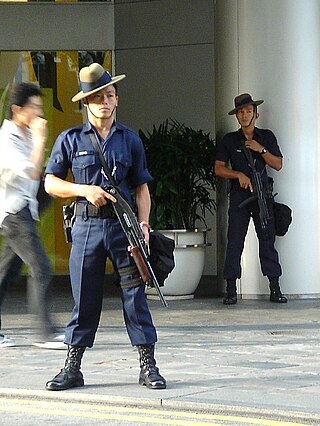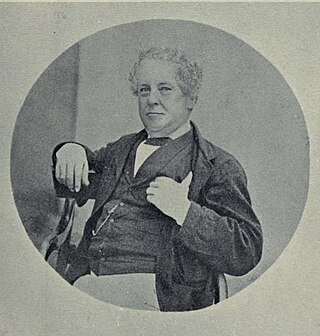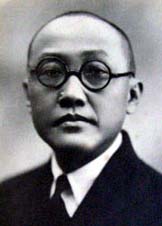Related Research Articles

William Alexander Pickering was the first Protector appointed on 3 May 1877 by the British government to administer the Chinese Protectorate in colonial Singapore. He was the first European official in Singapore who could speak fluent Mandarin and Hokkien and gained the trust of many of the Singapore Chinese. His efforts went a long way towards controlling the problems posed by the secret societies then. Pickering Street in Singapore's Chinatown is named after him.
The Chinese Protectorate was an administrative body responsible for the well-being of ethnic Chinese residents of the Straits Settlements during that territory's British colonial period. Protectorates were established in each area of the Settlements, namely Singapore, Penang and Malacca. Each was headed by a Protector. The institution was established in 1877 to handle all matters related to the Straits Settlements' Chinese residents. In particular, it sought to mitigate the human rights violations of the coolie trade, which had expanded to notorious levels by the 1850s in the region.

The Hock Lee bus riots took place on 24 April 1955 in Singapore. The riots started as a result of confrontation between the police, bus workers of the Hock Lee Amalgamated Bus Company and students who supported the bus workers.

The Ghee Hin Kongsi was a secret society in Singapore and Malaya, formed in 1820. Ghee Hin literally means "the rise of righteousness" in Chinese and was part of the Hongmen overseas network. The Ghee Hin often fought against the Hakka-dominated Hai San secret society.

The Gurkha Contingent (GC) is a line department of the Singapore Police Force (SPF) consisting primarily of Gurkhas from Nepal, recruited by the British Army with the purview of the Government of Singapore. The contingent's roles are as a special guard force and counter-terrorist force.

The term "British Malaya" loosely describes a set of states on the Malay Peninsula and the island of Singapore that were brought under British hegemony or control between the late 18th and the mid-20th century. Unlike the term "British India", which excludes the Indian princely states, British Malaya is often used to refer to the Federated and the Unfederated Malay States, which were British protectorates with their own local rulers, as well as the Straits Settlements, which were under the sovereignty and direct rule of the British Crown, after a period of control by the East India Company.

Singapore in the Straits Settlements refers to a period in the history of Singapore between 1826 and 1942, during which Singapore was part of the Straits Settlements together with Penang and Malacca. Singapore was the capital and the seat of government of the Straits Settlement after it was moved from George Town in 1832.

The Old Ministry of Labour Building is a former building of the Ministry of Labour located at Havelock Square in the Outram Planning Area, within the Central Area of Singapore's central business district. The building once housed the former Chinese Protectorate which was first established in 1877 to protect and control Chinese immigrants to Singapore. The building had since been restored in 1990 and currently used as the Family and Juvenile Court of Singapore.

Thomas Dunman (1814–1887) was an Englishman who served as the first Commissioner of Police in Singapore, Straits Settlements from 1856 to 1871.

Lee Choon Seng was a businessman and philanthropist in pre-independence Singapore. He founded several companies, cultivated rubber plantations in Malaya and started Chinese banks in the region. Lee held leadership roles in several Chinese community organisations in Singapore, notably the Singapore Chinese Chamber of Commerce and Industry (SCCCI), and supported Sun Yat-Sen's revolutionary cause in China. In addition, he promoted the growth of Buddhism in Singapore by setting up several Buddhist institutions, including the Singapore Buddhist Lodge, Singapore Buddhist Federation and Poh Ern Shih Temple. In 2008, his life and contributions to society were commemorated in a memorial hall at the Ee Hoe Hean Club.

The Kangchu system was a socio-economic system of organisation and administration developed by Chinese agricultural settlers in Johor during the 19th century. The settlers organised themselves into informal associations, and chose a leader from among themselves.

In December 1953, the British colonial government in Singapore passed the National Service Ordinance, requiring all male British subjects and Federal citizens between the ages of 18–20 to register for part-time National Service. The deadline for registration was on 12 May 1954 and those who failed to register would be either jailed or fined. On 12 May 1954, students from the Chinese Middle Schools did not register themselves for National Service. In light of the impending deadline for registration and with requests from the Chinese students, Chief Secretary William Goode would later meet representatives from the affected student body in the government house on 13 May 1954.
Immigration to Malaysia is the process by which people migrate to Malaysia to reside in the country. The majority of these individuals become Malaysian citizens. After 1957, domestic immigration law and policy went through major changes, most notably with the Immigration Act 1959/63. Malaysian immigration policies are still evolving.

Khoo Thean Teik was one of the most powerful and notorious Hokkien leaders of 19th-century Penang. His name, "Thean Teik", means "Heavenly Virtue". He was the leader of the Tokong or Khian Teik society that was involved in the Penang Riots of 1867 and through its connection with the Hai San, the internecine Larut Wars of 1861 to 1874. He traded through the companies Khoon Ho and Chin Bee. He was a towkay, trading in immigrant labour and had interests in the Opium Farms in Penang and Hong Kong. Thean Teik Estate, a residential neighbourhood in Penang, and Jalan Thean Teik are named after him.

Lieutenant-Colonel Robert Sandilands Frowd Walker, also known as R. S. F. Walker, was a prominent figure in Malaya during the British colonial era in the late 19th century.
Ngee Heng Kongsi of Johor was a Teochew secret society that founded the earliest Chinese settlement in Johor. However, it did not have a clandestine image and has instead been accorded a respectable place in the history of the Johor Chinese. The term kongsi generally refers to any firm or partnership, and has also been used to refer to any group or society in a very broad sense. Ngee Heng is the Teochew name for the Ghi Hin or Ghee Hin, its name in Hokkien. The name identifies it as the Teochew offshoot of the Tiandihui secret society.
The coming of the British to Singapore and the subsequent establishment of British rule saw the rise of secret societies in this small colony. Whilst known as "secret" societies, paradoxically they often worked in the open, and even played essential and functional roles within society, with state knowledge or tacit cooperation. Secret societies have a significant role in colonial Singapore society. They were a source of support for a significant portion of society, and this was possible due to their political, economic as well as social influence. Straddling both legitimate and illegitimate businesses which involved employment of large amounts of labour as well as various clientele, and involvement with authorities who gained from the economic as well as societal influence the secret societies wielded, ensured their continued influence throughout long extended periods during the colonial period.
Organised crime in Singapore has a long history with secret societies such as Ghee Hin Kongsi carrying out their activities in the 19th century. These organized groups hold great relevance to Singaporean modern history. Since 1890, organized groups began fading from Singapore, decline in street organized crime in the past years due to legislation has been put place to ensure authorities suppress the activities of criminal gangs. Contemporary Singapore witnessed a significant rise in other forms of crime —organised cyber-crime.
Anarchism in Malaysia arose from the revolutionary activities of Chinese immigrants in British Malaya, who were the first to construct an organized anarchist movement in the country - reaching its peak during the 1920s. After a campaign of repression by the British authorities, anarchism was supplanted by Bolshevism as the leading revolutionary current, until the resurgence of the anarchist movement during the 1980s, as part of the Malaysian punk scene.

Opium was first recorded in Singapore by a written document that record Stamford Raffles gifting opium to a local ruler in 1819 to establish Singapore. Opium then became accessible through trading and the opium farms in Singapore in the 19th century. It is one of the most traded good along the Sea Trade route after the end of the Opium Wars. With the rise of opium farms in Singapore, they acted as the middleman that help to process raw opium imported from British India, Persia, and Turkey to consumable opium and retail them to the Chinese coolies in local. In 1946, opium, including the tools, and opium dens are completely banned in Singapore. To treat the opium addicts, an Opium Treatment Centre was opened in 1955 and in 1989, the Singapore government extends the death penalty for opium traffickers.
References
- ↑ CHWEE CHENG FOON. "SECRET SOCIETIES IN SINGAPORE: SURVIVAL STRATEGIES, 1930s TO 1950s" (PDF).
- ↑ Abshire, Jean E. (2011). The History of Singapore. ABC-CLIO. p. 72. ISBN 9780313377426.
- ↑ Kamaludeen Mohamed Nasir, "Protected Sites: Reconceptualising Secret Societies in Colonial and Postcolonial Singapore" Journal of Historical Sociology (2016) 29#2 pp. 232-249.
- ↑ "Chinese Freemasons". Grand Lodge of British Columbia and Yukon. June 2011.